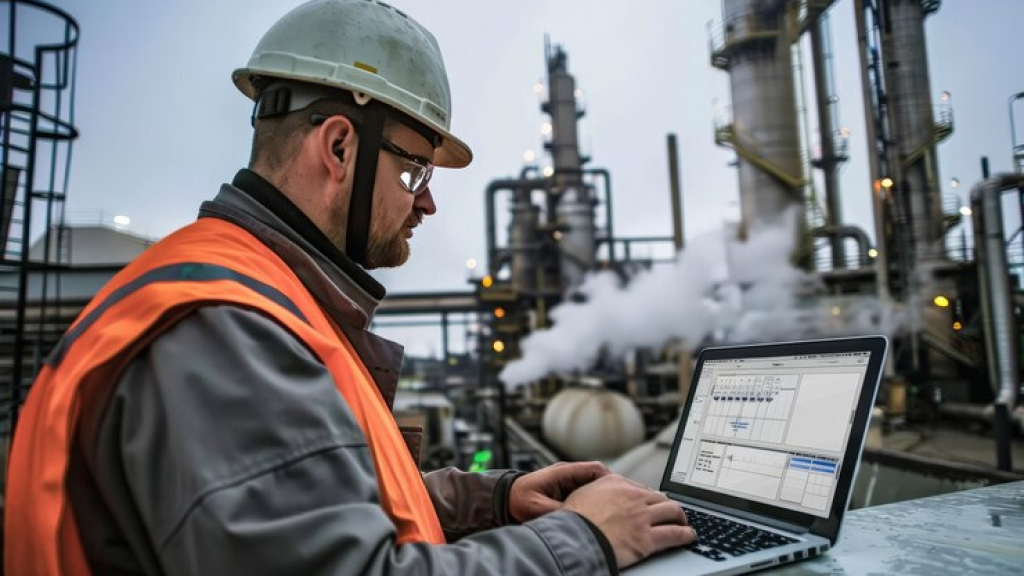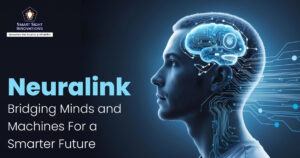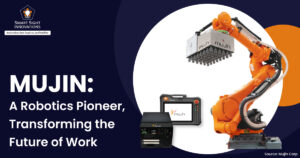
The global energy crisis is one of the most pressing challenges of our time, driven by soaring demand, depleting fossil fuel reserves, and the environmental toll of carbon emissions. As the world’s population grows and economies expand, the need for sustainable, reliable, and affordable energy solutions has become critical. However, traditional energy systems are struggling to keep up with these demands, leading to widespread power shortages, escalating energy costs, and intensified environmental degradation.
While AI is often lauded as a solution to many global challenges, its rapid adoption also raises concerns about its contribution to the energy crisis. AI systems, particularly those reliant on machine learning and deep learning algorithms, demand significant computational power. Below are some of AI’s impact on the global energy crisis.
1. Data Centers

Data centers are the critical infrastructure powering the digital world, from online services to AI and cloud computing. However, their rapidly growing energy and resource demands are exerting significant pressure on global resources. Many data centers rely on a mix of grid electricity and backup power solutions like diesel generators. While some facilities have transitioned to renewable energy, a large proportion still depend on fossil fuels, contributing to carbon emissions.
-
Energy Consumption
Data centers consume approximately 3% of global electricity, and 2% of the total greenhouse gas emissions, a figure expected to rise as digital services expand. High-performance computing tasks, such as AI training and big data processing, require immense computational power, further increasing energy demand.
In regions heavily reliant on fossil fuels, this leads to higher carbon emissions, exacerbating climate change. Efforts to improve energy efficiency and transition to renewable power are underway but remain insufficient to counterbalance growing demand.
-
E-Waste Generation
The hardware in data centers has a limited lifecycle, leading to substantial electronic waste. This contributes to the global e-waste problem, which poses environmental and health risks when improperly disposed of.
-
Carbon Emissions
If not powered by renewable energy, data centers significantly contribute to greenhouse gas emissions. The carbon footprint of data centers intensifies in regions where coal and gas dominate the energy mix.
The Amount of Computation Done in Data Centers
Data centers are the engines of the digital world, handling an extraordinary volume of computations every second to support services such as cloud computing, AI, social media, and e-commerce. The sheer scale of operations highlights their importance and the challenges they pose to energy efficiency and resource management.
- Data centers process billions of online searches, social media interactions, and e-commerce transactions daily.
- Google alone handles over 3.5 billion searches per day, requiring extensive computational power.
- Platforms like Amazon Web Services (AWS), Microsoft Azure, and Google Cloud host millions of applications and websites, managing vast amounts of data and complex algorithms.
- Training large AI models, such as ChatGPT or image recognition systems, requires petaflops of computational power over weeks or months.
- Inference tasks, where AI models are used in real-world applications, add to the computational load.
- Data centers analyze massive datasets for industries like healthcare, finance, and retail, performing trillions of operations in real-time to derive actionable insights.
- Platforms like Netflix, YouTube, and online gaming services process terabytes of data per second to ensure seamless user experiences.
This level of computation demands significant energy resources. Hyperscale data centers perform quadrillions of calculations per second, consuming vast amounts of electricity to power servers, cooling systems, and networking infrastructure.
As the digital economy grows, the computational workload in data centers is expected to double every three to four years. Balancing this growth with advancements in energy-efficient computing and sustainable practices is critical to mitigating their environmental impact.
2. Natural Gas Demand

The rise of AI is inadvertently increasing global demand for natural gas, as energy-intensive data centers and computational infrastructure often rely on this fossil fuel for power. Natural gas is a favored energy source for its ability to provide consistent and scalable electricity, making it ideal for powering the growing network of AI-driven systems.
-
Energy Requirements of AI Systems
Training and deploying AI models, particularly large-scale ones, require massive amounts of computational power. This energy demand is met by power plants, many of which use natural gas due to its relatively lower emissions compared to coal and its ability to supply steady, on-demand energy.
Data centers hosting AI applications are significant contributors to this trend, as they operate 24/7 to support tasks like AI training, cloud computing, and real-time analytics.
-
Infrastructure Expansion
The rapid expansion of AI technologies necessitates more data centers, which in turn drives up natural gas consumption. As some regions lack sufficient renewable energy infrastructure, natural gas remains the solution to support this growth, especially in areas where intermittent renewable sources like solar and wind cannot consistently meet high energy demands.
-
Impact on the Energy Market
The increasing reliance on AI has made natural gas a crucial component of energy strategies, pushing up global demand. This dependency may slow the transition to renewable energy, as investments in natural gas infrastructure continue to grow.
3. Coal’s Role in Making Transistors and Memristors

Coal, traditionally associated with energy generation, has recently found a surprising application in advanced electronics, including the production of transistors and memristors. Researchers are exploring how coal’s unique carbon-based structure can be utilized to develop cost-effective and sustainable materials for modern electronic devices.
-
Coal as a Carbon Source
Coal contains high concentrations of carbon, which can be processed into graphene-like materials or carbon nanostructures. These materials exhibit excellent electrical conductivity, thermal stability, and structural strength, making them suitable for electronic components like transistors and memristors.
-
Transistors and Coal
Transistors, the building blocks of modern electronics, require semiconducting materials. Processed coal can serve as a base material for creating thin-film transistors (TFTs). By refining coal into highly conductive carbon-based films, researchers have developed transistors that are more affordable and environmentally friendly compared to those made from traditional silicon.
-
Memristors and Coal
Memristors are next-generation memory devices that store information by changing resistance. Coal-derived carbon films can be engineered to exhibit the resistive switching behavior necessary for memristor functionality. These materials offer the potential for low-cost, high-performance, and sustainable memory technologies.
4. Water Usage

AI’s rapid development has revolutionized industries, but its environmental impact, particularly water usage, is an often-overlooked concern. Hyperscale data centers consume millions of gallons of water per day, while facilities in arid areas exacerbate existing water scarcity, creating ethical and operational challenges. AI relies on water for the following reasons:
-
Data Center Cooling
AI computations run on powerful servers housed in data centers that generate immense heat. To prevent overheating, many data centers use water-based cooling systems such as:
-
- Evaporative Cooling
Water absorbs heat from equipment, evaporating to cool the facility.
- Evaporative Cooling
-
- Chilled Water Systems
Large volumes of water are cooled and circulated to absorb server heat.
- Chilled Water Systems
-
AI Training and Operations
Training large AI models, such as ChatGPT or other advanced systems, requires extended periods of high-power computations, leading to increased water usage for cooling purposes.
As AI continues to expand, addressing its water footprint is crucial to ensuring that technological progress does not come at the expense of environmental stability. Innovative cooling solutions, policy interventions, and industry-wide commitments to sustainability can help mitigate the climate impact of AI’s water usage.
Widespread Solutions to Address the Global Energy Crisis Caused by AI

Tackling the global energy crisis caused by AI requires an integrated approach combining technological innovation, policy implementation, and environmental stewardship. Below are some widespread approaches:
1. Transition to Renewable Energy Sources
- Powering Data Centers with Green Energy
Companies can integrate solar, wind, and hydroelectric power into data center operations to reduce reliance on fossil fuels.
- Energy Storage Systems
Implementing batteries or other storage solutions ensures consistent availability of renewable energy, even during low production periods.
2. Optimizing AI Models and Algorithms
- Energy-Efficient AI Development
Encourage the creation of lightweight and optimized AI models requiring fewer computational resources.
- Federated Learning
Train AI on distributed devices instead of centralized servers, minimizing data transfer and energy use.
- Model Sharing and Reuse
Sharing pre-trained models across organizations reduces redundant training and associated energy costs.
3. Sustainable Data Center Practices
- Efficient Hardware Design
Use energy-efficient GPUs, CPUs, and custom AI chips like ARM’s low-power processors.
- Advanced Cooling Solutions
Implement liquid cooling, immersion cooling, or free-air cooling systems to minimize energy and water usage for temperature control.
- Waste Heat Recovery
Reuse excess heat from data centers to power other systems, such as heating buildings.
4. Edge Computing Adoption
- Localized Processing
Edge computing processes data closer to the source, reducing energy-intensive data transmission to central data centers.
- Reduced Latency
This also optimizes energy consumption by performing AI computations locally.
5. AI-Assisted Energy Optimization
- Grid Management
AI can optimize electricity grids by forecasting demand, integrating renewable sources, and reducing energy waste.
- Smart Devices and IoT
Deploying AI in smart home systems to adjust energy usage dynamically and reduce unnecessary consumption.
6. Recycling and Circular Economy for AI Hardware
- Recycling E-Waste
Extract valuable materials from outdated hardware to reduce the need for new resource extraction.
- Sustainable Manufacturing
Utilize green manufacturing processes to lower the carbon footprint of AI hardware production.
7. Policy and Regulatory Measures
- Green AI Standards
Governments can establish benchmarks for AI energy efficiency and carbon emissions.
- Tax Incentives
Provide financial incentives for companies adopting sustainable energy practices in AI operations.
- Global Collaboration
Foster international agreements to promote shared responsibility and innovation in sustainable AI practices.
8. Public Awareness and Corporate Responsibility
- Transparency in Energy Use
AI companies should disclose energy usage and carbon footprints to promote accountability.
- Green Certifications
Encourage organizations to seek certifications for sustainable AI practices, enhancing consumer trust and motivation.
9. Investments in Research and Development
- Sustainable AI Technologies
Invest in R&D for new algorithms, hardware, and cooling systems that prioritize energy efficiency.
- Long-Term Innovation
Support cross-industry collaborations to discover revolutionary solutions to the energy challenges posed by AI.
10. Monitoring and Measuring Impact
- AI Energy Audits
Regularly assess the energy consumption of AI systems to identify and rectify inefficiencies.
- Carbon Offsetting Programs
Invest in projects like reforestation or renewable energy generation to counterbalance emissions from AI.
ARM’s Energy-Efficient Chips for AI

ARM, a leading semiconductor company, is revolutionizing AI computing with its development of chips capable of running AI models on 25x less power compared to traditional processors. This innovation represents a significant step toward reducing the energy footprint of AI applications. As these chips become widely available, they may serve as a model for designing green technologies that balance performance with environmental responsibility.
1. Optimized Architectures
ARM designs its processors to maximize performance-per-watt. Their chips are built with energy efficiency at the core, using:
- Reduced Instruction Set Computing (RISC) – Simplified processing tasks to reduce energy use.
- AI-Specific Enhancements – Integrating specialized hardware like neural processing units (NPUs) to handle AI computations more efficiently.
2. Edge AI Applications
ARM chips are particularly suited for edge devices, enabling AI models to run locally on smartphones, IoT devices, and embedded systems. This eliminates the need for energy-intensive data transfers to cloud data centers.
3. Sustainability Goals
By reducing power requirements, ARM’s chips support the sustainability goals of companies aiming to lower their environmental impact while maintaining cutting-edge AI capabilities.
Implications for the Industry
- Energy-efficient chips reduce electricity bills for businesses deploying AI at scale.
- Enhanced edge computing enables more localized AI processing, reducing the load on data centers.
- Energy-efficient solutions make AI accessible to smaller companies and low-power devices, expanding the reach of AI innovation.













